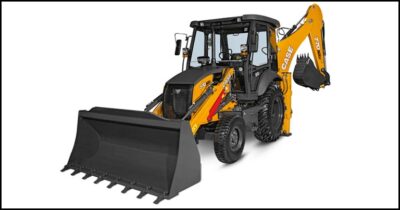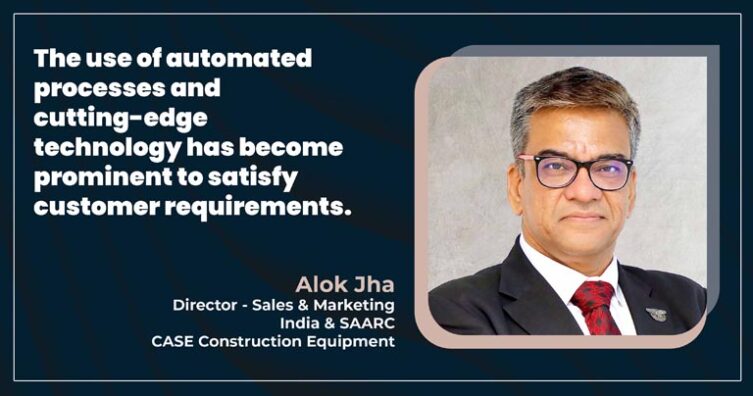In an exclusive interaction, CASE talks about the procurement trends and required training to up-skill the operators’ knowledge of telematics and IoT.
What types of construction equipment are required to meet quality and speedy construction requirements?
Automated processes and cutting-edge technology are becoming increasingly important to promote improvements due to the shifting needs and demands of the clients. The buyers benefit from this since it decreases downtime and boosts production and efficiency. Products with advanced technology and telematics are in great demand. Today’s equipment owners place a big emphasis on technology as well as excellent productivity with reduced fuel consumption. This aids in producing the product quickly and effectively.
All the equipment we develop at CASE is built with in-depth research and cutting-edge technology, ensuring the machines’ performance, security, and efficiency so that equipment purchasers may make well-informed choices when acquiring machines.

What are the present procurement trends in construction and road equipment for efficient project completion?
The majority of businesses are considering localising the acquisition of the components for their machines due to the disruption in the global supply chain caused by a variety of factors. The domestic sourcing of raw materials aids in overcoming logistical difficulties in terms of cost control and delivery schedules. Additionally, it provides significant flexibility to adapt and develop in response to market needs.
Additionally, building a circle of vendor and supplier networks around trustworthy people willing to support the brand with a shorter turn-around time and manage sudden changes due to demand fluctuations is essential. Supplier consolidation to optimise pricing competitiveness is also a requirement currently.
At CASE India, we have been ‘making in India’ for around 30 years, and most of our procurement is done by local vendors and suppliers. This helped us efficiently cater to our customers, even during the lockdown phase.
How do you need training and skill development to measure equipment maintenance and safety?
It is imperative to upskill and upgrade the engineers, operators, and mechanics through relentless training sessions related to new technologies and machinery. This effort will help increase the durability of the equipment, which is a valuable asset for any fleet owner. The training helps understand the telematics data and machine downtime so that it can be serviced in time, making sure to avoid a major mishap or a delay in projects.
What are the procurement challenges in your business? What measures are being taken to iron out those issues?
At CASE, we produce 75 percent indigenous products for the domestic market as well as for over 75 countries located in Africa, the Middle East, the Asia Pacific region, and Latin America markets.
Purchasing parts and raw materials from within the country has assisted us in dealing with various challenges that have affected our industry and other industries. With a renewed focus on the manufacturing sector and various government programmes aiming to make India the preferred global manufacturing hub, we see more and more equipment companies choosing to localise their products.
India is recognised as the best-cost source country for us at CASE. Our vibratory compactors and loader backhoes are over 90 percent localised. We plan to increase sourcing from India in the next two years, further aligning our strategy with the Aatmanirbhar Bharat and Made-in-India campaigns.
With the infrastructure sector becoming smart and intelligent, which technologies drive efficiency at project sites?
In the coming years, digitisation and technical equipment integration will continue to dominate. Equipment and process design will increasingly combine IoT, data analytics, telematics, and machine learning. We are open to integrating innovative strategies and technologies backed by extensive research to deliver superior equipment. Using alternative fuels and hybrid vehicles will be a significant trend shortly. OEMs are already putting forth the effort to incorporate these changes into their local and international products. Additionally, increasing pressure on customers’ operation and ownership costs may lead to a more robust adoption of the pay-per-use model.
Cookie Consent
We use cookies to personalize your experience. By continuing to visit this website you agree to our Terms & Conditions, Privacy Policy and Cookie Policy.


















